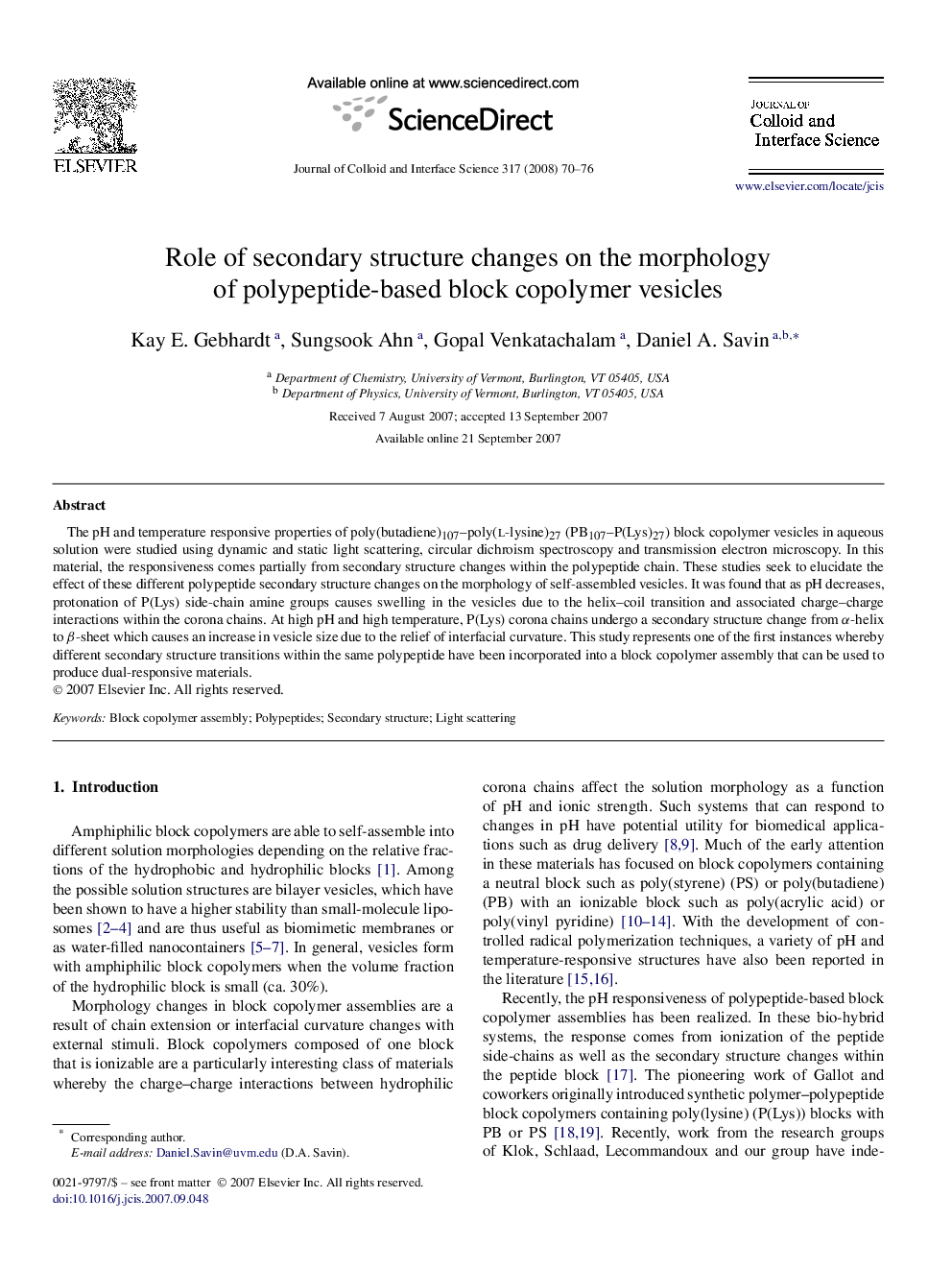| Article ID | Journal | Published Year | Pages | File Type |
|---|---|---|---|---|
| 611868 | Journal of Colloid and Interface Science | 2008 | 7 Pages |
The pH and temperature responsive properties of poly(butadiene)107–poly(l-lysine)27 (PB107–P(Lys)27) block copolymer vesicles in aqueous solution were studied using dynamic and static light scattering, circular dichroism spectroscopy and transmission electron microscopy. In this material, the responsiveness comes partially from secondary structure changes within the polypeptide chain. These studies seek to elucidate the effect of these different polypeptide secondary structure changes on the morphology of self-assembled vesicles. It was found that as pH decreases, protonation of P(Lys) side-chain amine groups causes swelling in the vesicles due to the helix–coil transition and associated charge–charge interactions within the corona chains. At high pH and high temperature, P(Lys) corona chains undergo a secondary structure change from α-helix to β-sheet which causes an increase in vesicle size due to the relief of interfacial curvature. This study represents one of the first instances whereby different secondary structure transitions within the same polypeptide have been incorporated into a block copolymer assembly that can be used to produce dual-responsive materials.
Graphical abstractBlock copolymers of poly(butadiene)107 and poly(l-lysine)27 spontaneously self-assemble into pH and temperature responsive vesicles in solution. In this schematic, the formation of non-covalent crosslinks from the α-helix to β-sheet transition in poly(lysine) corona chains causes a relief of interfacial curvature and a corresponding increase in vesicle size.Figure optionsDownload full-size imageDownload as PowerPoint slide
